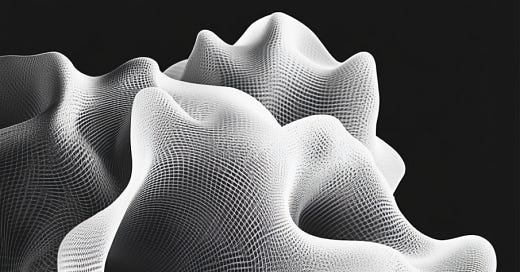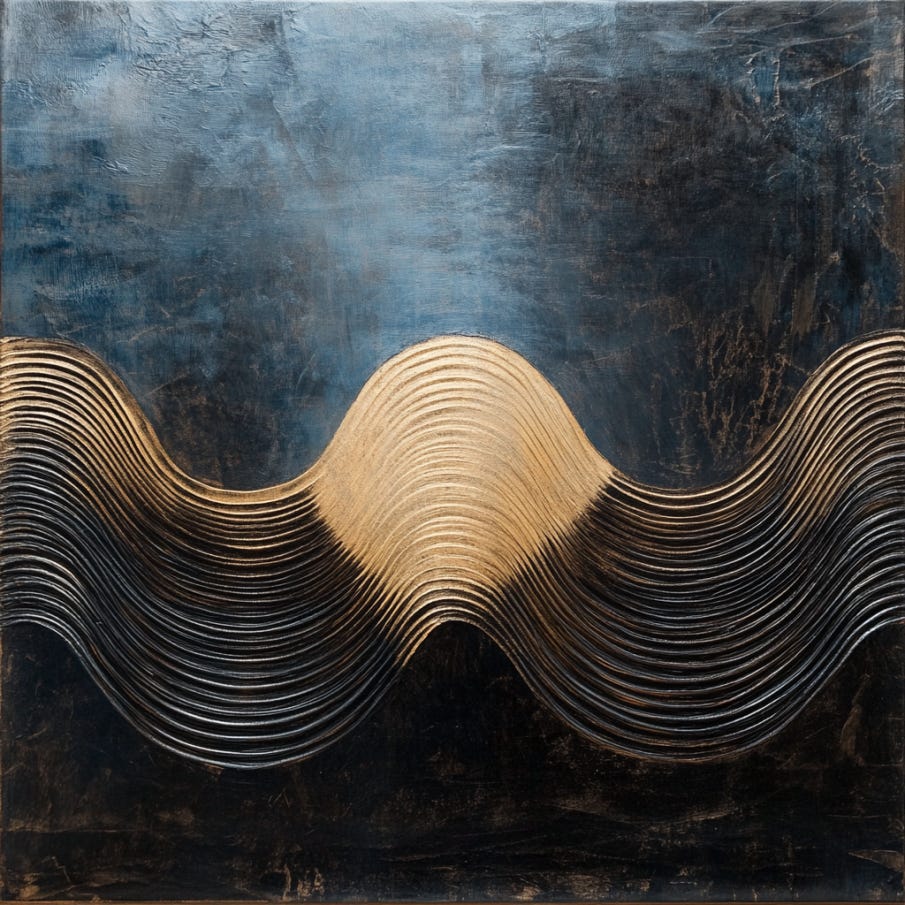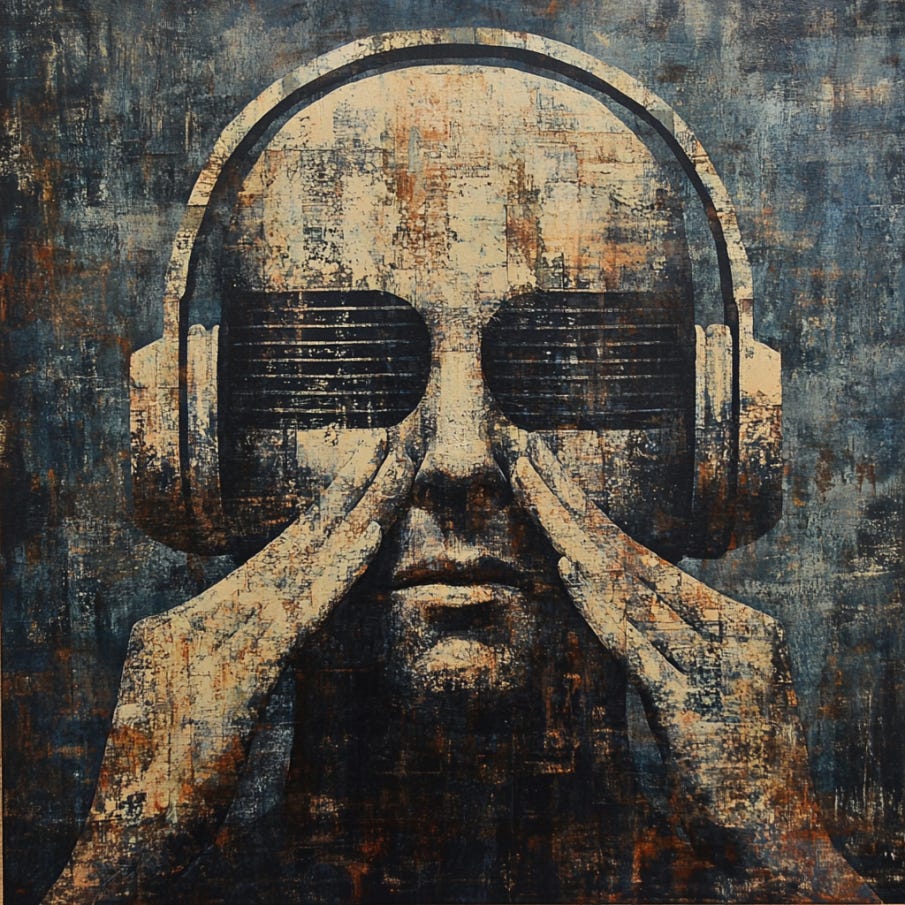Hearing Loss Cures (2025 Research): 100% Full Regeneration & Restoration, Clinical Trials, Breakthroughs
When will we finally cure hearing loss caused by noise (NIHL) or drugs (DIHL)?
Back in the early 2000s, science publications (e.g. ScienceDaily, Eurekalert, et al.) would regularly publish “breakthroughs” in research and/or development of “cures” for hearing loss.
This led to mainstream hype that a cure was just around the corner… predictions being made in the early 2000s would’ve led you to think that we’d have a cure by 2010 at the latest… but we are still very far from a cure.
Significant progress has been made/is being made, but hearing loss hasn’t really been a top research priority. Hearing loss reversal/cure R&D receives significantly less funding than other medical/health conditions relative to its disease burden.
When your ears aren’t hearing properly, your brain is under-stimulated, cognition declines, then you’re given hearing aids which simply amplify noise louder which leads to a vicious spiral of increased damage (e.g. hearing is damaged → hearing aids amplify sound → sound causes more damage).
A lot of people end up with tinnitus (the annoying constant perception of a sound being generated by the ears)… the sound is usually high-pitched (buzzing, hissing, whining, etc.) but can be any pitch… most just suck it up and learn to cope and some have such low arousal or brain activity they aren’t really bothered by it.
The tinnitus is a byproduct of hearing loss in most cases (not all but most)… why? When the structures of the inner ear are damaged (cells, nerves, synapses, et al.) — the brain doesn’t perceive sound properly and attempts to fill in the perceptual gaps, resulting in a pseudo-sound that never stops.
Common causes of hearing loss:
Age-related hearing loss (presbycusis) (~50-60%): As you get older you lose “hair cells” called cilia in the cochlea. Blood flow decreases to the ear and structures don’t function as well. Auditory nerves can degrade with age. Layer in lifelong noise exposure (cumulative damage) and we have many old people with hearing difficulties.
Noise-induced hearing loss (NIHL) (~20-30%): It’s become “cool” to act like you’re unfazed by loud noises, but each exposure causes damage. Loud sirens, sporting events, fireworks, concerts, power tools (e.g. chainsaws), etc. cause direct permanent damage to the ears. Airpods culture with 24/7 headphones can also cause some damage if decibels are too high.
Genetic factors (congenital) (~10-20%): Certain genes can cause hearing loss. Luckily there are new gene therapies to prevent/cure congenital types of hearing loss.
Infections (~5-10%): Viral infections such as influenza, coronaviruses, etc. can damage the inner ear in some cases. The virus may directly damage ear cells or cause immune overactivation — resulting in cytokine/chemokine and inflammatory damage.
Ototoxic drugs (DIHL) (~5-10%): Drugs that cause damage to various otic structures (e.g. aminoglycosides, cisplatin, etc.) leave people with permanent hearing damage.
Recently there were a lot of news reports about “gene editing” to cure hearing loss… this is great for those with genetic predispositions to hearing loss… but this completely fails to address all other forms of hearing loss (~80-90% of cases).
There are plenty of solid treatments for age-related vision loss and eye issues (e.g. LASIK, LASEK, PRK, gene therapies, etc.) — but this is because vision has lower biological complexity than the ears.
Sure we have “cochlear implants” which are better than being completely deaf, but you can go on YouTube and listen to how they actually sound (abysmal).
I. Introduction (Hearing Loss)
Noise-induced hearing loss (NIHL) and drug-induced hearing loss (DIHL)—both forms of sensorineural hearing loss (SNHL)—are leading causes of acquired deafness worldwide, affecting millions of individuals across varied demographics.
NIHL typically arises from prolonged exposure to high-decibel environments (e.g., industrial or military settings, recreational loud music) or a singular “impulse” noise event (e.g., explosions).
DIHL emerges when certain ototoxic medications (notably aminoglycoside antibiotics and platinum-based chemotherapeutics, such as cisplatin) damage the cochlea.
Until recently, the standard view was that these conditions produced permanent deficits because human cochlear hair cells and neurons do not spontaneously regenerate.
However, accelerating research in regenerative medicine, gene therapy, and novel pharmaceuticals now targets full reversal of sensorineural hearing loss—something once thought unattainable.
Ultimate Goal: 100% Hearing Restoration
While partial improvements (e.g., 10–20 dB gains or better speech-in-noise understanding) can significantly enhance quality of life, the holy grail is 100% restoration of hearing—meaning a genuine return to normal thresholds and clarity across the affected frequency range.
Implications for Tinnitus: Because many tinnitus cases stem from peripheral damage (hair cell or synaptic deficits), fully restoring the damaged cochlea often resolves or attenuates tinnitus as well.
The central question becomes: When and how will we achieve total functional recovery for NIHL/DIHL, instead of just managing symptoms (i.e. coping)?
II. Pathophysiology of Sensorineural Hearing Loss
A.) Overview of the Cochlea’s Structure
Organ of Corti: Sits atop the basilar membrane in the cochlea; houses:
Outer hair cells (OHCs): Amplify incoming sound, refine frequency specificity.
Inner hair cells (IHCs): Primary sensory transducers that pass mechanical signals to spiral ganglion neurons (SGNs).
Supporting cells: Provide structure/metabolic support; in birds, they can become hair cells post-injury.
Spiral ganglion neurons (SGNs): Relay signals via the auditory nerve to the brain.
Stereocilia (“cilia”): Delicate hair-like projections whose tip links open ion channels for mechanoelectrical transduction. Vulnerable to high-intensity noise or chemical toxins.
B.) Noise-Induced Hair Cell and Synaptic Injury
Mechanical Damage to Stereocilia
Extremely loud sounds (>120–130 dB) can shear off tip links that connect stereocilia, causing sudden losses in mechanotransduction.
Repeated sublethal noise exposures can also wear down stereocilia, eventually pushing hair cells into apoptosis.
Excitotoxicity at the Synapse
Intense noise causes excessive glutamate release at inner hair cell synapses, damaging or destroying ribbon synapses.
This yields the phenomenon of “hidden hearing loss,” where audiograms appear normal but patients have trouble understanding speech in noise.
Metabolic and Oxidative Stress
Loud noise triggers production of reactive oxygen species (ROS) and reactive nitrogen species (RNS), reducing cochlear blood flow.
If ROS is not neutralized, hair cells and SGNs undergo apoptotic cell death.
Cumulative Degeneration
Chronic exposure, even at moderately high dB (e.g., 85–90 dB over years), leads to incremental hair cell loss and synaptic damage.
Ultimately results in permanent threshold shifts and difficulty in noisy environments.
C.) Drug-Induced (Ototoxic) Damage
Many drugs have potential to be ototoxic and cause hearing loss, but these are the 3 most common types.
Cisplatin / Platinum Agents
Chemo mainstay; accumulates in the stria vascularis and hair cells, causing oxidative damage.
Typically kills basal-turn (high-frequency) hair cells first, also harming ribbon synapses → speech clarity deficits.
Aminoglycoside Antibiotics (Gentamicin, Amikacin, etc.)
Form iron–drug complexes → potent oxidative stress. Genetic variants can magnify toxicity.
Commonly leads to bilateral, high-frequency loss with possible tinnitus.
Loop Diuretics, Radiation, Other Agents
Loop diuretics can cause temporary shifts via electrolyte disruption.
Radiation can exacerbate chemo-induced hair cell/SGN loss.
D.) Spiral Ganglion Neuron & Auditory Nerve Impairment
Synaptopathy from excessive glutamate or ototoxic agents can precede actual hair cell death, leaving “orphaned” SGNs that eventually die from lack of trophic support.
Over time, untreated hair cell loss leads to secondary neuronal degeneration, compounding hearing deficits.
Tinnitus: A Key Byproduct
Central Gain Hypothesis: When peripheral input drops, central auditory circuits become overactive, creating a phantom sound (tinnitus).
Many NIHL/DIHL patients report tinnitus, especially if hair cell or synaptic damage remains unaddressed.
Why Sensorineural Hearing Damage is So “Permanent” in Humans
Unlike birds and fish, mammals lack robust native regeneration pathways for hair cells.
Supporting cells rarely re-enter the cell cycle or differentiate into new hair cells under natural conditions.
Similarly, lost or damaged SGNs do not spontaneously regrow.
Hence, until recently, irreversible hearing loss was presumed the norm.
This sets the stage for the therapeutic revolution: modern research focusing on restoring cochlear elements—hair cells, synapses, and neurons—via molecular or cell-based interventions.
III. Leading Macro Treatment Approaches
This section surveys the 5 major therapeutic categories aiming for full or near-full hearing restoration, along with examples of specific compounds, companies, and supporting research.
A.) Hair Cell Regeneration
Biological Logic
Restoring lost hair cells is essential for threshold recovery in moderate/severe losses, since hair cells transduce mechanical energy into neural signals.
Key Strategies
Notch Pathway Inhibition (Gamma-secretase Inhibitors)
LY3056480/AUD1001 (Audion + UCL, REGAIN trial): Showed ~10 dB average improvements in some participants.
Mechanism: Blocking Notch frees supporting cells to become hair cells.
Wnt Pathway Activation
FX-322 / FX-345 (Frequency Therapeutics): Intratympanic gel spurring progenitor proliferation. Early trials show speech gains in certain subsets; repeated dosing had complications.
siRNA/Gene-Based Approaches (Hes1 Silencing)
Hough Ear Institute (AOK-1): Preclinical. By turning off Hes1, supporting cells can re-enter a hair cell differentiation pathway.
Logic/Efficacy Rating: 7.5/10
Why: Directly addresses the major mechanical transducer deficit, crucial for threshold restoration.
Shortfall: Without synaptic or neuronal repair, it may yield only partial improvements, especially in advanced or drug-induced scenarios with nerve loss.
B.) Synaptic Repair (Cochlear Synaptopathy)
Rationale
Many with “normal” audiograms but poor speech-in-noise have lost synapses (hidden hearing loss). Reconnecting these to SGNs can drastically improve clarity.
Key Players
Otonomy (OTO-413): BDNF-based gel for intratympanic injection. Phase 1/2 data showed speech-in-noise improvements in subsets.
Hough Ear Institute (NHPN-1010): Oral pill (NAC + nerve growth factors). Animal data demonstrates synaptic regeneration, Phase 1 in acute NIHL found safe.
Logic/Efficacy Rating: 6.5/10
Why: Large clarity improvements if hair cells survive, but alone it won’t fix threshold losses from hair cell destruction. Best used alongside hair cell regeneration.
C.) Gene Therapy
Mechanism
Uses viral vectors (AAV, adenovirus) to deliver or re-activate genes for hair cell creation (e.g., ATOH1) or protective functions.
Examples
Decibel Therapeutics (DB-OTO): Phase 1/2 for congenital otoferlin deficiency; might expand to acquired hearing loss eventually.
Akouos/Eli Lilly (AK-OTOF): Similar approach. Safety data in children with genetic hearing loss could pave the way for NIHL/DIHL expansions.
Novartis (CGF166): ATOH1 gene therapy concluded Phase 1/2 in adults. Results inconclusive for large-scale regeneration but advanced vector knowledge.
Logic/Efficacy Rating: 8/10
Why: If it can replicate avian regeneration or add protective genes, it might be a near “one-and-done.”
Shortfall: Delivery complexities, potential immune responses, and not guaranteed to fix neuronal deficits unless synergy with neuron-targeting factors is included.
D.) Auditory Nerve (SGN) Regeneration
Why It Matters
Severe NIHL or repeated ototoxic exposures can destroy SGNs, making hair cell–only fixes insufficient.
Approaches
Stem Cell Progenitors: Rinri Therapeutics (Rincell-1): Aiming to inject neural progenitors into the cochlea (trial ~2025).
Neurotrophic Factors: BDNF, NT-3 delivered either pharmacologically or via gene therapy to encourage neuron survival/outgrowth.
Logic/Efficacy Rating: 6/10
Why: Vital if nerve damage is extensive, but very early stage. Likely necessary in combination with hair cell regeneration for advanced cases.
E.) Pharmacological Neuroprotection & Otoprotectants
Mechanisms
Antioxidants: NAC, Ebselen (SPI-1005) to reduce ROS from noise or drug exposure.
Anti-inflammatory / NLRP3 Inhibitors: MCC950, Oridonin block NLRP3 inflammasome activity, potentially limiting cochlear inflammation.
Cell-Death Pathway Inhibitors: SENS-401 (Sensorion), JNK blockers to preserve hair cells/neurons if administered early.
AC102 (AudioCure): Shown to restore near-prenoise hearing in rodents if given quickly post-trauma; Phase 2 in humans for acute SNHL.
Logic/Efficacy Rating: 5/10
Why: Good for prevention/limiting damage but cannot replace lost hair cells or neurons. By itself, not enough to achieve 100% restoration if advanced deficits exist. Best as part of a synergy.
Could “Chicken Genes” Protect Us From Drug-Induced Hearing Loss, Too?
One of the most tantalizing lines of hearing research compares mammals, who suffer permanent damage, with birds, who often recover from deafening noise.
A chicken blasted with intense sound can bounce back because its supporting cells proliferate and become new hair cells.
That begs the question: Would adopting a “chicken-like” regeneration strategy (via gene edits or molecular reprogramming) also protect us from drug-induced loss?
Hair Cells Are Still Central: If we can constantly regenerate hair cells, we at least offset those killed by ototoxic compounds like cisplatin or gentamicin. This could reduce or limit permanent threshold shifts significantly.
But Damage Goes Deeper: Ototoxic agents don’t just shear off stereocilia. They also harm ribbon synapses, spiral ganglion neurons, and supporting vascular/metabolic systems in the cochlea. Merely re-growing hair cells won’t solve all these injuries unless the rest is also addressed.
Hence, a chicken-style solution helps, but might not singlehandedly guarantee total protection from every type of drug-induced injury. We’d also need:
Synaptic or neuronal repair so new hair cells can reconnect to the auditory nerve.
Stronger oxidative stress defenses (via gene editing or upregulated antioxidant pathways) to handle the broader toxicity.
Toward the “Bulletproof Ear”?
Some labs are investigating whether we can overlay multiple gene edits—one boosting hair cell regeneration, another enhancing antioxidant capabilities—to create a cochlea inherently resistant to both noise and drug damage.
We’re still in early preclinical or Phase 1/2 experiments, but the vision is a future where hearing loss might become a short-term condition rather than a life-long deficit.
Takeaway: Avian-like hair cell regeneration is a huge step, but drug-induced hearing loss often extends beyond just the hair cells. A truly comprehensive solution requires synergy—hair cell regrowth plus synapse/neuron repair and advanced protective measures. This multi-pronged approach holds the promise of turning what used to be “permanent” hearing loss into a fixable or even preventable problem. (That said, even if we could do only gene edits for auto hair-cell regeneration, this would be a huge benefit for reversing NIHL.)
IV. Novel Delivery Mechanisms
A.) Why Delivery Is Key
Delivering therapies into the cochlea poses a unique challenge. The inner ear sits behind the protective bony labyrinth and has a blood-labyrinth barrier somewhat akin to the blood-brain barrier, preventing many systemic drugs from reaching high concentrations there. Researchers must find ways to localize treatment to the inner ear without damaging residual hearing.
B.) Intratympanic Injections
Procedure: A physician injects a liquid or gel formulation through the tympanic membrane (eardrum) into the middle ear. The drug then diffuses across the round window membrane into the cochlea.
Examples:
FX-322 (Frequency Therapeutics): A hydrogel that releases small molecules to trigger hair cell regeneration.
LY3056480 (Audion Therapeutics): A gamma-secretase inhibitor used in the “REGAIN” trial.
OTO-413 (Otonomy): BDNF-laden formulation for synaptic repair.
Strengths:
Concentrates the drug in the ear, minimizing systemic side effects.
Allows repeated dosing if needed.
Weaknesses:
Can be uncomfortable; requires repeated clinical visits.
Distribution inside the cochlea isn’t always uniform.
Not ideal for certain gene therapy vectors that might require more direct access.
C.) Cochleostomy or Round Window Micro-Injection
Rationale: For advanced interventions like gene therapy, simply diffusing through the round window might be insufficient. Surgeons may do a small cochleostomy or precisely inject through the round window niche to ensure the vector reaches deep regions.
Examples:
Akouos and Decibel Therapeutics are delivering viral vectors (AAV) for otoferlin gene therapy in congenital cases.
Some future multi-gene strategies may require extremely localized injection for maximum coverage.
Pros:
Delivers the therapy exactly where it’s needed.
Potentially more uniform coverage of cochlear turns.
Cons:
More invasive; typically done under anesthesia.
Risk of additional trauma or infection.
D.) Sustained-Release Implants and Hydrogels
Concept: A biodegradable material placed in or near the round window that slowly releases therapeutic agents (e.g., for 2–4 weeks).
Pioneers: Otonomy leveraged this approach (OTO-413 for synapse repair, OTO-6XX for hair cell regeneration R&D).
Advantages:
Avoids repeated injections.
Maintains a stable drug concentration in the cochlea.
Challenges:
Must design the matrix to degrade safely and consistently.
Harder to remove or halt if adverse effects appear.
E.) Oral or Systemic Pills
Appeal: Oral medications are easier for patients—no specialized procedure needed.
Barriers: The blood-labyrinth barrier can severely limit cochlear uptake. Most drugs do not achieve effective inner ear concentrations unless specifically formulated or taken at high doses, which may lead to systemic toxicity.
Examples:
NHPN-1010 (Hough Ear Institute): A combination pill aimed at synapse regeneration and antioxidant defense.
SENS-401 (Sensorion): Orally given to protect hearing from acoustic trauma or cisplatin-induced damage.
Limitations:
Typically more effective for prevention or acute rescue rather than precise, localized regeneration.
Might need co-administration with nanoparticle carriers or specialized prodrugs in future research.
F.) Nanoparticle & Prodrug Approaches
The “Smart” Delivery Dream: Molecules designed to remain inert systemically, then “activate” only in the cochlea’s unique environment (e.g., pH or enzymes).
Status: Mostly preclinical. While conceptually exciting (minimizing off-target effects, maximizing ear specificity), no major human trials have demonstrated a fully ear-targeted systemic approach yet.
V. Leading Research Efforts & Key Players
A.) Academic Centers
Massachusetts Eye and Ear / Harvard Medical School
Zheng-Yi Chen (hair cell regeneration),
Charles Liberman (synaptopathy),
Jeff Holt (gene therapy).
Partnerships: Decibel Therapeutics, Frequency Therapeutics.
Stanford University
Stefan Heller’s lab: Stem cell–derived hair cells, organoids; part of the Stanford Initiative to Cure Hearing Loss.
University of Sheffield (UK)
Spawned Rinri Therapeutics focusing on auditory neuron regeneration. Vital translational hub bridging lab to first-in-human.
University College London (UCL)
Collaborates with Audion Therapeutics on the REGAIN trial. A global hub for hair cell, synaptic, and gene therapy research.
USC, University of Michigan, University of Melbourne
Each has strong ENT/audiology labs. Melbourne’s Bionics Institute merges cochlear implants with biologics for future combination treatments.
B.) Biotech & Pharmaceutical Companies
Frequency Therapeutics (USA)
FX-322 / FX-345 for hair cell regeneration. Phase 2 refining dosage after partial successes.
Audion Therapeutics (Netherlands)
LY3056480/AUD1001 for Notch inhibition. The REGAIN trial showed modest average gains (~10 dB).
Decibel Therapeutics (USA)
DB-OTO gene therapy (Phase 1/2) for pediatric otoferlin deficiency; may expand to noise/drug-induced if successful.
Akouos / Eli Lilly (USA)
AAV-based gene therapy (AK-OTOF). If proven safe/effective, might adapt for acquired hearing loss.
Hough Ear Institute / Otologic Pharmaceutics (USA)
NHPN-1010 (synaptic regeneration pill), AOK-1 (Hes1 siRNA for hair cell reprogramming).
US Department of Defense collaborations focusing on NIHL in military populations.
Sensorion (France)
SENS-401 (Phase 2 for sudden/cisplatin-induced hearing loss).
Collaborative gene therapy projects with Institut Pasteur (GJB2, OTOF).
Otonomy (USA)
Intratympanic sustained-release tech (OTO-413 for synaptic repair, OTO-6XX for regeneration). Company ceased ops, but IP might continue.
Rinri Therapeutics (UK)
Rincell-1: Stem cell–based SGN replacement, trial ~2025.
AudioCure Pharma
AC102 for acute NIHL rescue, Phase 2. Preclinical rodent data showed near-complete hearing restoration if administered promptly.
Mogrify (UK)
Reprogramming supporting cells into hair cells (preclinical).
Sound Pharmaceuticals
Ebselen (SPI-1005), an antioxidant enzyme mimic, tested for noise-induced hearing loss and Meniere’s.
C.) Research Consortia and Public Funding
Hearing Restoration Project (Hearing Health Foundation) unites leading labs to collaborate on hair cell regeneration breakthroughs.
U.S. Department of Defense Hearing Restoration Research Program invests in NIHL solutions for military personnel.
Collective Impact: A broad ecosystem—academia, biotech, government—accelerates the pursuit of reversing NIHL/DIHL, moving from partial to full restoration possibilities.
VI. Clinical Trials & Status (2025)
A.) Regeneration Trials
Frequency Therapeutics’ FX-322
Phases: Completed Phase 1b, some encouraging speech-in-noise improvements in subsets of participants. Phase 2 had complexities with repeated dosing strategies.
Focus: Single or repeated intratympanic injections to stimulate hair cell formation.
Audion/UCL (REGAIN, LY3056480)
Phase 1/2: Showed modest average gains (~10 dB) in some participants.
Next Steps: Possibly refining dosing or combining with synapse restoration.
Hough Ear Institute (NHPN-1010)
Phase 1 complete for acute noise-induced hearing loss (safety).
Plans for Phase 2 to evaluate improvement in real-world patient populations, including possible synergy with hearing aids for partial losses.
B.) Synaptic Repair Trials
Otonomy’s OTO-413
Phase 1/2 data: Some improved word recognition in noise.
Corporate challenges paused further development, but the concept remains a blueprint for BDNF-based local therapy.
C.) Gene Therapy Trials
Decibel Therapeutics (DB-OTO): Phase 1/2 for otoferlin deficiency in pediatric patients. If it succeeds, approach may extend to other forms of hearing loss, including acquired.
Akouos (AK-OTOF): Similar trial; sets stage for future expansions.
D.) Neuroprotection/Otoprotection
SENS-401 (Sensorion)
Phase 2 ongoing for sudden SNHL and cisplatin-induced otoprotection.
Early results suggest partial prevention of permanent loss if administered promptly after trauma or during chemo cycles.
AC102 (AudioCure Pharma)
Restored hearing to near baseline in rodent NIHL models when given shortly post-exposure. Currently in Phase 2 for acute sensorineural loss in humans.
Key Considerations…
Placebo Effects & Variability: Human hearing trials often face high variability in test outcomes (pure-tone thresholds, speech recognition), which can muddy data interpretations and require large sample sizes.
Safety vs. Efficacy: Many Phase 1/2 trials show “safe and tolerable” profiles but only small effect sizes in measured hearing metrics—leading to refinements in drug delivery, dosing intervals, or patient selection criteria.
VII. Top 5 Hearing Loss Treatment Candidates (2025): Ranking by Mechanism Logic
Note: This list focuses on solo efficacy for advanced or chronic damage. In reality, synergy (e.g., combining hair cell regeneration with nerve repair and protective factors) often yields the best results, but here we evaluate each treatment individually.
This list is based on logic, not real-world efficacy. In other words, considering what we know about sensorineural hearing loss in humans AND the mechanisms of the specific drug/molecule in question — would we expect it to have a significant effect?
It’s possible I may end up ranking something low that defies logic or works better than anticipated and/or something that seems plausible based on the mechanism, but is a total flop.
#1: AOK-1 (Hough Ear Institute)
Mechanism: siRNA approach to knock down Hes1, thereby freeing cochlear supporting cells to become new hair cells.
Relevance to Longstanding SNHL: Potentially powerful if enough supporting cells survive in the damaged cochlea. By re-growing hair cells, it tackles a fundamental gap in advanced hearing loss.
Logic: If it truly reactivates hair cell generation (similar to birds), it could significantly improve thresholds in chronic loss—even if synapses and neurons need separate attention.
Rating: 8.5/10. High theoretical impact for severe or older damage, but depends on robust synapse formation and presence of viable supporting cells.
#2: DB-OTO (Decibel Therapeutics, Future Adaptations)
Mechanism: AAV-based gene therapy restoring key deafness genes (currently otoferlin for congenital). Could be modified to deliver hair cell regeneration or protective genes in adults.
Relevance to Longstanding SNHL: If adapted for acquired hearing loss, it might replicate “chicken-like” regeneration or embed protective pathways—potential for large gains.
Logic: Gene therapy done well can be near “one-and-done,” potentially addressing advanced loss by reprogramming cochlear cells. Early data so far is restricted to congenital forms in children.
Rating: 8/10. Excellent potential if the approach extends to adult or noise/drug-induced loss; proven safe in pediatric trials, but uncertain coverage in heavily damaged ears.
#3: FX-322 / FX-345 (Frequency Therapeutics)
Mechanism: Small-molecule Wnt activation to stimulate hair cell regeneration via intratympanic gel.
Relevance to Longstanding SNHL: Could restore thresholds in mild–moderate, possibly older damage if enough supporting cells remain. Results have been mixed in repeated dosing for advanced cases.
Logic: Early speech recognition gains showed promise; for heavily damaged cochleas, it might yield partial restoration.
Rating: 7.5/10. Good hair cell regeneration logic, but so far data suggest modest improvements in moderate losses, uncertain effect in severe or long-established deficits.
#4: LY3056480 (Audion Therapeutics)
Mechanism: Gamma-secretase (Notch) inhibitor, tested in the REGAIN trial, coaxing supporting cells to become hair cells.
Relevance to Longstanding SNHL: Potentially helps if there’s still a reservoir of supporting cells. The trial showed ~10 dB gains in some participants.
Logic: Similar to FX-322, focusing on hair cell regeneration. Not proven to address severe or multi-layer damage on its own.
Rating: 7/10. Decent prospective improvements, but data so far indicate moderate gains, not a universal fix.
#5: AC102 (AudioCure)
Mechanism: Pharmacological agent that, if administered soon after noise trauma, can restore near-prenoise hearing (in rodent models).
Relevance to Longstanding SNHL: Primarily beneficial for acute rescue. If the damage is old, AC102 is less likely to reverse lost cells.
Logic: Outstanding effect if used quickly post-exposure; less help for older deficits.
Rating: 6.5/10 for reversing established loss. Potentially huge for acute events but not a robust solution for chronic damage.
VIII. Potential Multi-Treatment Synergy
A.) Why One Treatment Isn’t Enough
Hair Cell Regeneration recovers or bolsters the primary transducers, but if synapses or neurons are missing, that alone won’t yield full hearing clarity.
Synaptic Repair reconnects hair cells to the auditory nerve, but with too few or damaged hair cells, thresholds remain limited.
Gene Therapy can induce permanent changes in the ear’s regenerative program (like reactivating avian-like genes), yet it may also require pharmacological support to minimize oxidative damage or refine synapse integration.
B.) Combo Treatments
Regeneration + Neuroprotection
For drug-induced hearing loss, combining hair cell renewal with strong antioxidant or anti-inflammatory measures could mitigate ongoing toxic damage.
Example: A future scenario might see a cochlear infusion that first protects existing cells (SENS-401 or AC102), followed by a gene or small-molecule protocol that spurs new hair cell formation.
Gene Editing + Synapse Restoration
Certain labs speculate a multi-gene approach: one “turns on” hair cell progenitor activity, another codes for neurotrophic factors to rebuild synapses, plus a third that bolsters the antioxidant arsenal.
Delivered via advanced viral vectors or multiple injections, it addresses deeper tissue damage (e.g., spiral ganglion loss) as well.
Combining Pharmacotherapy with Cochlear Implants
Some severe cases might get an implant for immediate function while regenerative treatments slowly restore biological hearing. Over time, if regeneration is successful, reliance on the implant might decrease.
C.) “Chicken Genes” for All?
Long-Term Vision: If gene editing can safely replicate the robust self-repair capacity seen in avian cochleas, the “holy grail” would be a scenario where human ears continuously replenish lost hair cells.
Limits: Ototoxic drugs can harm more than hair cells (e.g., synapses, neurons). So, the ear must also have upgraded defenses—like better oxidative stress response or neuronal resilience.
Ongoing Work: Researchers are layering multiple gene modifications in animal models, seeing if synergy leads to permanent hair cell renewal plus robust synapse protection.
IX. Projected Timelines for Full (100%) Restoration
A.) Current Status: Where We Are in 2025
Partial Gains Demonstrated: Existing Phase 1/2 trials (e.g., FX-322, LY3056480, OTO-413) show at least some measurable hearing improvements—particularly in speech understanding. While none has yet claimed a complete cure, the data prove that regenerating or repairing cochlear elements can deliver functional benefits in humans.
Gene Therapy for Congenital Loss: Decibel’s DB-OTO and Akouos’s AK-OTOF are tackling hereditary hearing loss in children. Though not directly aimed at noise- or drug-induced damage, they establish safety and effectiveness for delivering genes into the cochlea. This paves the way for a future wave of gene-editing therapies aimed at acquired sensorineural losses.
B.) Likely Timelines
Next 5 Years (2025–2030)
Refinement of Partial Restoration:
Expect commercial availability of some hair cell or synapse–targeted therapies if pivotal trials prove efficacy.
Possibly advanced trials combining small-molecule regeneration with protective agents (to address oxidative damage) or with gene therapy enhancers.
Better Delivery Platforms:
More sustained-release hydrogels and gene vector improvements; single-dose intratympanic regimens might become standard for mild–moderate cases.
Mid-Term (2030–2035)
Integration of Multi-Pronged Therapies:
Gene therapy + small molecules + neurotrophic support to tackle hair cell, synapse, and neuron regeneration in parallel.
Potential for “cocktail” approaches in large Phase 3 trials, bridging partial improvements toward near-complete hearing restoration in certain groups (e.g., recently noise-traumatized, mild–moderate drug-induced).
Expanded Indications:
Pediatric successes with gene delivery extended to adult NIHL/DIHL; also more advanced synergy for preventing repeated or ongoing drug toxicity (like monthly hair cell renewal capacity).
Longer Term (2035–2045)
More Routine Access to 70–90% Restoration: For many patients, the combination of regeneration and synaptic/neuronal repair might yield near-normal hearing thresholds. Not universal, but widely available at specialized centers.
100% Cure: Achieving consistent, across-the-board complete reversal still faces challenges (especially for older patients with extensive neuron loss). But by ~2040-2045, we could see “full cures” for many newly diagnosed or less chronically advanced cases, thanks to improved gene editing, advanced “chicken-like” hair cell cycles, and robust protective mechanisms.
C.) Real-World Obstacles
Clinical Variability: Hearing outcomes can be influenced by age, genetics, cause of hearing loss, and presence of comorbidities (like diabetes or autoimmune issues).
Regulatory Timelines: Trials for hearing restoration therapies require large sample sizes and robust endpoints (pure-tone thresholds, speech-in-noise, patient-reported outcomes), which lengthen the approval process.
Funding & Collaborations: Large-scale Phase 3 trials demand substantial capital. Partnerships among biotech, pharma, academic labs, and government agencies are crucial for translating breakthroughs to the clinic.
X. What about Tinnitus?
For most cases of tinnitus (assuming damage-related from medications, aging, viruses, etc.) treating hearing loss via reversal/cure will likely alleviate the tinnitus (constant ringing/buzzing in ones ears).
There are other types of tinnitus (e.g. pulsatile, somatic, etc.) that are unrelated to damage and can be treated via other methods. I could do a separate write-up on tinnitus treatments… it is theoretically possible to treat/cure tinnitus without fixing the underlying hearing damage, but ideally we’d kill 2 birds (tinnitus & HL) with 1 stone.
A.) Peripheral vs. Central Mechanisms
Tinnitus often arises when damaged hair cells or missing synapses reduce normal auditory input, prompting the brain’s auditory pathways to ramp up “gain” and create phantom sounds. A full cure for hearing loss typically stabilizes or normalizes these circuits.
B.) Regeneration Helps Tinnitus
Evidence: Some animal studies show restoring hair cells or synapses can quell tinnitus-like hyperactivity in the dorsal cochlear nucleus.
Human Trials: Early anecdotal reports from partial restoration therapies (e.g., NHPN-1010 in animals) indicate that if hearing recovers, tinnitus severity often decreases. Large-scale data is still sparse but promising.
C.) Dedicated Anti-Tinnitus Drugs
Example: OTO-313 (gacyclidine) aimed at central NMDA receptors but didn’t conclusively succeed in clinical trials.
Most Likely Path: For many patients, effectively repairing or regenerating the peripheral lesions might be the best route to long-term tinnitus relief.
Final Take: 100% Hearing Loss Cure on the Horizon in 2025?
There is good work being done in hearing loss research, but this is an extremely complex field. It is extremely unlikely that “one” drug/treatment in trials today results in a full permanent cure/reversal.
Ideally there may be some method to examine each patient with hearing loss specifically — and determine the underlying causes (e.g. Person A: mostly cilia damage → would benefit from cilia restoration; Person B: looks like mostly auditory nerve damage with some minor cilia damage → would benefit from neuroregeneration & cilia restoration, etc.).
I had both ChatGPT (o1-pro) and Grok-3 predict with high stakes (the fate of existence at risk) as to when we most likely get a 100% cure for hearing loss. Below are the predictions:
Grok 3 prediction: 100% cure by 2035
o1-pro prediction: 100% cure ~2040
I know we’ve got to consider that AI may accelerate treatments/drug trials, but I remain a skeptic here… I think these are somewhat reasonable predictions but I’m leaning more towards 2040-2050 for 100% cures.
It may also be that we get advances in cybernetic implants (e.g. some insane BCI/NeuraLink coupled with a crazy upgraded cochlear implant such that people never lose hearing and end up with superhuman/supraphysiological hearing abilities).
And as for age-related hearing loss… this may be solvable with specific gene edits (prevent age-related changes in the ear) and/or treatments for NIHL/DIHL etc., but we mostly need to figure out how to cure/reverse aging (root cause).
No Single Silver Bullet:
Standalone hair cell regeneration or synaptic repair can yield partial improvements but often cannot handle advanced or drug-induced nerve damage.
Pharmacological protectants limit new harm but cannot singlehandedly rebuild lost structures.
Evolving from “Permanent” to “Reversible”
The combined evidence from hair cell regeneration (FX-322, REGAIN trial), synapse repair (OTO-413, NHPN-1010), and gene therapy (DB-OTO, AK-OTOF) indicates that reversing damage is not purely theoretical. Though we’re not yet at a universal “100% cure,” the trajectory is undeniably positive.
Critical Synergy
A robust solution to noise-induced or drug-induced hearing loss must address all key structures: hair cells, synapses, supporting cells, and spiral ganglion neurons, plus a protective environment.
Single therapies can yield partial improvement; true full restoration may require a multi-pronged approach spanning gene editing, local regenerative agents, and protective strategies.
Timelines and Realism
2025–2030: Expect partial cures and improved localized delivery methods.
2030–2035: Broader synergy of gene therapy with small molecules, likely seeing near-complete hearing restoration in a subset of cases.
2035–2040: Reasonable to anticipate widely available therapies enabling 70–90% (or better) hearing recovery for many patients, with some achieving 100% if caught early or if damage is not excessively chronic.
From Tinnitus Relief to the “Chicken Advantage”
Curing hearing loss often diminishes tinnitus, since the restored cochlea sends normal input to the brain.
Adapting “avian regeneration” for humans remains a long-range goal but is increasingly plausible, thanks to gene editing innovations. Such a leap could revolutionize both noise-induced and drug-induced hearing losses, turning what used to be permanent into something largely fixable or even preventable.
Overall: The era of irreversible NIHL and DIHL is inching toward a close. The next decade will likely see commercial treatments delivering substantial hearing gains, followed by increasingly sophisticated combos that inch closer to full restoration. Though challenges remain—technical, biological, and regulatory—the field is moving faster than ever before, fueled by breakthroughs in regenerative biology, advanced drug delivery, and the hope of replicating a chicken’s self-repair powers in the human ear.














